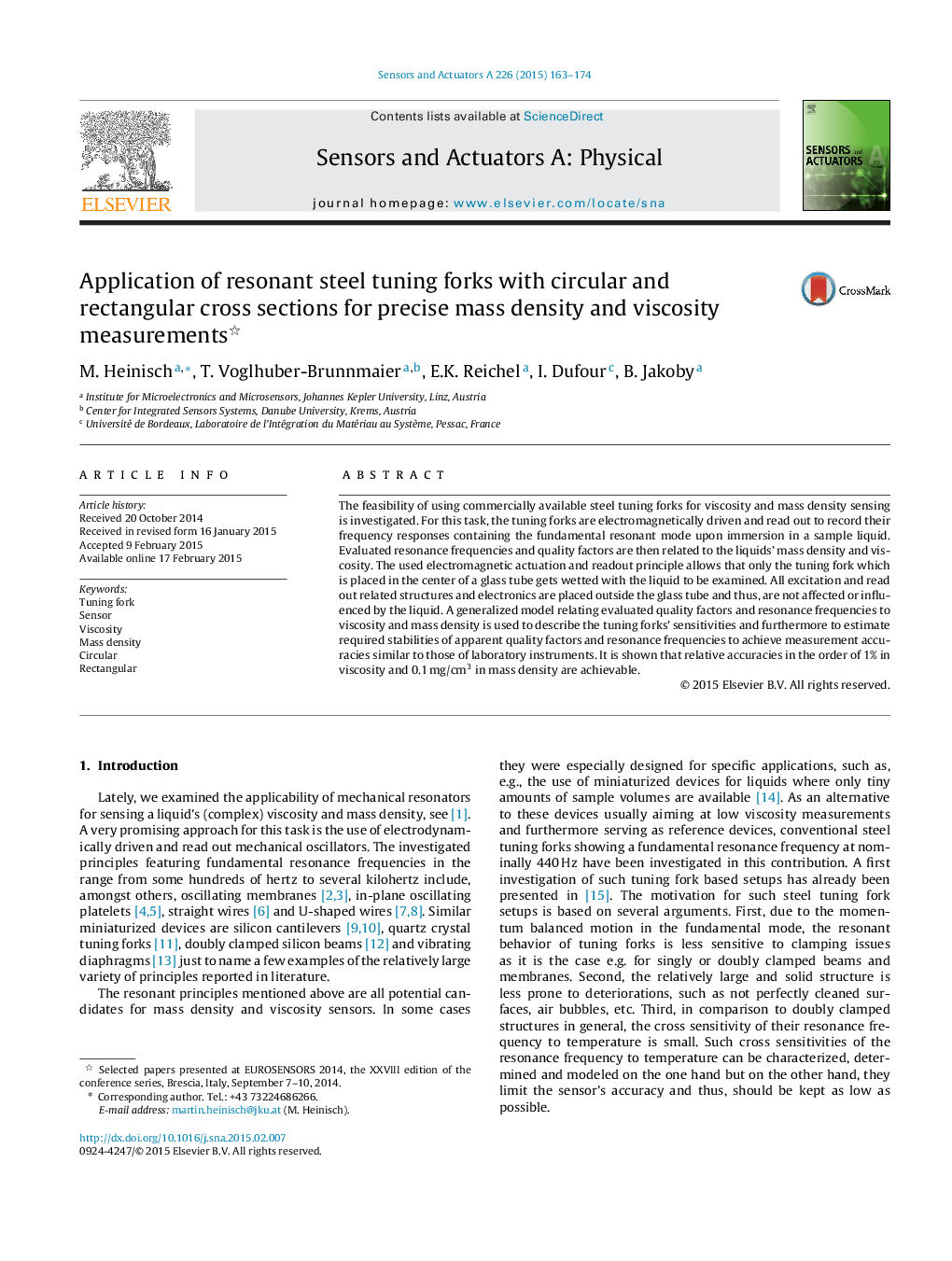| Article ID | Journal | Published Year | Pages | File Type |
|---|---|---|---|---|
| 748681 | Sensors and Actuators A: Physical | 2015 | 12 Pages |
•Resonant steel tuning forks with circular and rectangular cross sections are used for precise mass density and viscosity sensing.•The sensitivity of both devices to mass density and viscosity is analyzed and compared.•Required accuracies for the resonance frequency and quality factor determination are estimated.•Measurement accuracies in the order of 1% in viscosity and 0.01% in mass density are achieved.
The feasibility of using commercially available steel tuning forks for viscosity and mass density sensing is investigated. For this task, the tuning forks are electromagnetically driven and read out to record their frequency responses containing the fundamental resonant mode upon immersion in a sample liquid. Evaluated resonance frequencies and quality factors are then related to the liquids’ mass density and viscosity. The used electromagnetic actuation and readout principle allows that only the tuning fork which is placed in the center of a glass tube gets wetted with the liquid to be examined. All excitation and read out related structures and electronics are placed outside the glass tube and thus, are not affected or influenced by the liquid. A generalized model relating evaluated quality factors and resonance frequencies to viscosity and mass density is used to describe the tuning forks’ sensitivities and furthermore to estimate required stabilities of apparent quality factors and resonance frequencies to achieve measurement accuracies similar to those of laboratory instruments. It is shown that relative accuracies in the order of 1% in viscosity and 0.1 mg/cm3 in mass density are achievable.
